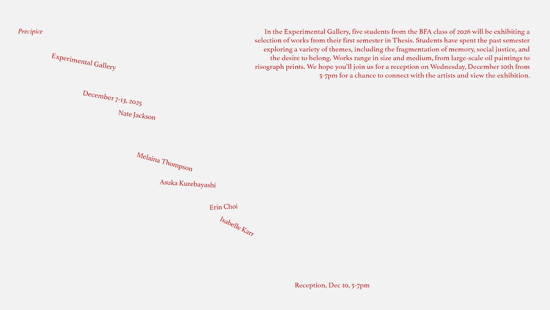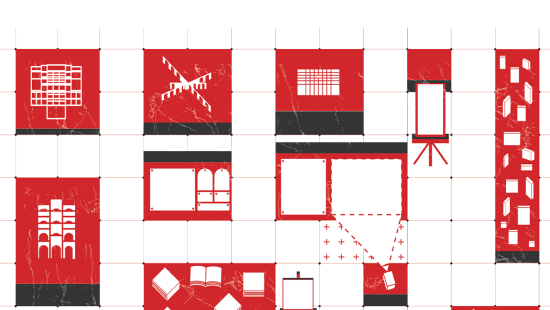Preston H. Thomas Memorial Symposium Exhibition: Junior Architects

Jacob Comerci, Out of Scale (2019), University of Michigan, ArcPrep. image / provided
The exhibition Junior Architects foregrounds early-learning and design enrichment opportunities through an examination of 25 programs taking place throughout the United States. These initiatives offer an alternative to standardized educational tracks that primarily aim to expand access to design education but that do not explicitly confront entrenched issues of social inequality. Rather than focusing solely on the expansion of traditional educational routes that students may take, this exhibition explores innovative approaches that foster new models which integrate a multiplicity of institutional and cultural experiences. These models have a mutual impact on higher education, professional practice, and, ultimately, the built environment itself. Recognizing that there is no one-size-fits-all solution to architectural education or enhancing spatial literacy in the built environment, the exhibition raises critical questions about the various ways and life stages at which individuals can engage with and effect change in their surroundings.
The collection of case studies that Junior Architects presents focuses on the need for a more holistic approach to supporting and empowering a diverse body of students throughout their entire educational path and career. While the programs that were initially established with this mission in mind have made progress, a more comprehensive effort and review of the systems that are in place is necessary to bridge gaps in students' trajectories and to achieve large-scale advancements. Responding to this need, an in-depth exploration of three distinct categories of support systems are presented that organize the case studies: Vertical Networks that connect early education and academia with the profession, Horizontal Networks that create connections between tiered academies, and Open-Ended Support Systems aimed at broader cultural transformation. To this end, the exhibition assesses the implications of current structures on architectural pedagogy and explores how progressive frameworks in early education might shift pedagogical practices in higher education to better support the success of marginalized student populations.
The exhibition features the following programs:
- ACE Mentorship Chicago Chapter (Chicago, Illinois)
- AIA/Center for Architecture K-12 (New York, New York)
- Architecture League Mentorship (New York, New York)
- Baltimore Design School + Morgan State University (Baltimore, Maryland)
- Carnegie Mellon UDream (Pittsburgh, Pennsylvania)
- Design as Protest/Public Design Agency (National)
- The Equity Architectural Education Consortium (National)
- Eternal Seeds (New Orleans, Louisiana)
- Fate (Detroit, Michigan)
- Gensler Apprentice Program (Chicago, Illinois)
- Harvard Graduate School of Design + Perkins&Will, Black in Design (Boston, Massachusetts)
- Ho'oulu 'Ōpio Farms (Kāne'ohe, Hawaii'i)
- Mobile Makers (Chicago, Illinois)
- New York City College of Technology ARCscholars (New York, New York)
- Oklahoma State University ASTEK Program (Stillwater, Oklahoma)
- Pratt Young Scholars (New York, New York)
- Prep for Prep (New York, New York)
- Princeton University ArcPrep (Trenton, New Jersey)
- Project Pipeline Chicago Chapter (Chicago, Illinois)
- Rensselaer Polytechnic Institute NOMAS Camp (Troy, New York)
- Science and Technology Entry Program (New York State)
- Territory (Chicago, Illinois)
- University of Michigan ArcPrep (Detroit, Michigan)
- University of Southern California A-Lab (Los Angeles, California)
- University of Southern California Architecture + Advocacy (Los Angeles, California)
- Upward Bound (National)
- Youth Design Center (Brooklyn, New York)
- 4-H (National)
Curation and Design: Suzanne Lettieri, Jefferson Lettieri Office (JELE)
Curatorial Assistants: Imani Day, Neha Gard
Fabrication and Design Coordination: Eduardo Cilleruelo Teran
Production Assistants: Leo Li, Justin Mortman, Theo Milbourne, Freda Qiu
With support from: Preston H. Thomas Memorial Series, Cornell College of Architecture, Art, and Planning







